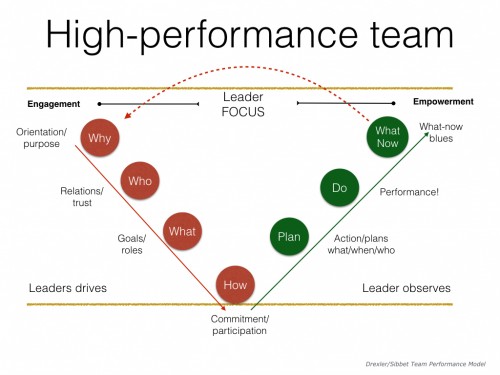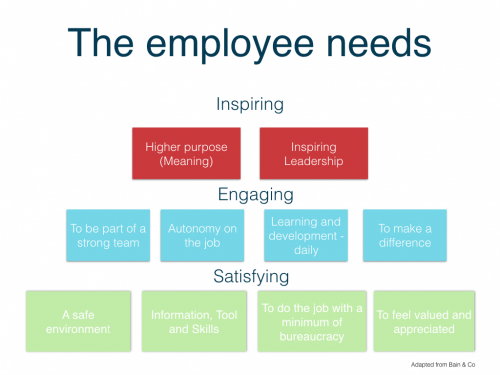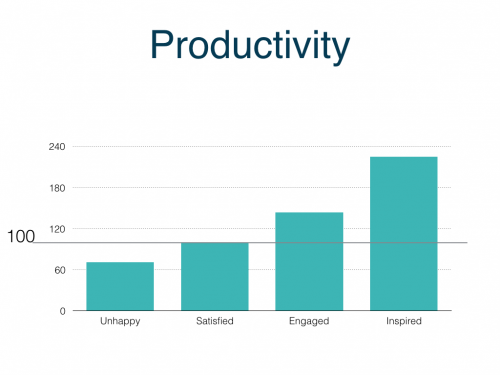
Of all the things that can boost emotions, motivation, and perceptions during a workday, the single most important is making progress in meaningful work. And the more frequently people experience that sense of progress, the more likely they are to be creatively productive in the long run. Whether they are trying to solve a major scientific mystery or simply produce a high quality product or service, everyday progress, even a small win, can make all difference in how they feel and perform.
The Progress Principle
This quote which makes so much sense to me brings us to another aspect of not just why we need to focus on developing the people around us, but also how we can do it.
Focus on progress
In order to progress, we need a baseline to progress from. Once we have a baseline, we can start thinking about what we need to learn or practice in order to get better.
For learning actually to happen, there must be a gap between your current capability and the results that you desire.
So in order for our people actually to learn they need to:
- Have an awareness of the gap
- Be willing to declare their incompetence (I don’t know how to do that.)
- Commit to learning
(I have written about this in a previous post some time ago.)
So if I sneak into your business and tap any one of your team members on the shoulder and ask them: “What are you working on at the moment in order to get better?”, or I ask them: “In what ways does your boss feel you have made progress last month?”, do they know?
Or is progress something that is randomly observed and then celebrated: “Oh look isn’t this nice!”?
Focusing on progress is an important part of your leadership role. And your most important tool for this is not a dashboard in excel but conversations, one-on-one conversations (According to Gallup research, team members who have no or very few one-to-one sessions with their direct supervisor are 67% more likely to be disengaged at work. I mention this just in case you have the notion that one-on-one is a waste of time and it is easier to tell them all at once.)
If you happen to be a manager of managers, this is even more import – you are the role model. If you are not having one-to-one conversations (about progress) with your direct reports, there is little chance that they are having them with their team members. In fact, if you are not talking to them about how they are progressing with their approach to manage progress with their team, I am pretty sure it is not happening at all.
How to structure an engaging conversation
What would be a good way to structure these conversations?
Establish the gap. Once we have a gap, we can establish a goal. Moving toward our goal is what progress would look like. Then we can have a chat about so what is going on now compared to that goal. Once we agree on how what is going on is different from the goal, then we can talk about what options there could be in order to make progress towards the goal. Finally, we pick an action and commit to doing that.
The following conversation will be a follow up / feedback on how this is going. If you are familiar with coaching, you will have recognised that what I have described here as a framework is in fact the GROW coaching model – you can check it out in more details HERE.
In any case, in my upcoming course The Team Leaders’ Toolbox, we will be exploring this model more in details. If you would like to be notified when we launch that, sign up with the link below!
 Enter your email address below and we will notify you when we launch the Team Leader’s Toolbox!
Enter your email address below and we will notify you when we launch the Team Leader’s Toolbox!
__________________________________________________________________
This post is one of a series where we are exploring the notion of leadership and how this is different from management. Our starting point is the Service Profit Chain and the understating that the management part of our job will only take us so far. If we really want to create an organisation that is capable of delivering outstanding customer experiences, we need to develop an organisation that delivers outstanding employee experiences – and that requires leadership. You can check out other articles of the series below:
- Are you an inspiring leader to work for?
- What does it require to be an inspirational leader?
- The something for something system is at the heart of the uninspiring workplace.
- How is team management different from team leadership and why should I worry?
- Teams are organic systems, and therefore, by definition unstable.
- How you can help you team manage their states
- Do you understand the stages that your team goes through?
- What the h… went wrong?
- Who gets the last chef?











